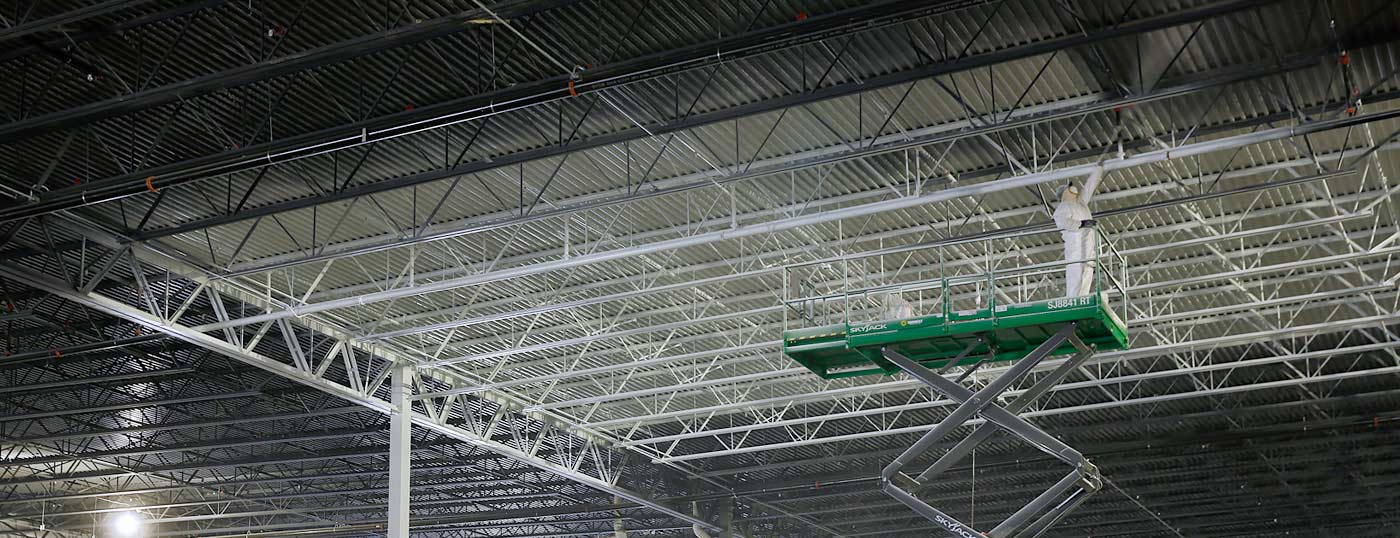
When consumers buy cars, 88% of them consider color a key factor in their decision, followed closely by paint finish and paint effect. A large number of consumers — 33% — would change their car choice if their preferred color is unavailable.
The color and finish of steel joists and steel deck is often just as important, if not more so. Steel joists and deck require the proper finish to preserve their longevity in corrosive environments, to provide a desired aesthetic and, most importantly, to satisfy customer and project demands.
Steel joists, joist girders and steel deck have a variety of finish options, and New Millennium is here to help.
Choosing the right coating depends on many project factors. Is it an interior or exterior application? Will the steel be visible to occupants? How important is color to the building owner or developer? Will it be exposed directly — or even indirectly — to ultraviolet light? Is the application in a humid environment or an environment with potential exposure to corrosive salt spray?
An important distinction must be drawn between primer and paint, as referred to in this article. Primer is intended to protect the steel for a reasonable installation period while exposed to ordinary atmospheric conditions and should be considered an impermanent and provisional coating. Paint is a final protective and/or aesthetic coating.
Typically, a joist is supplied with a coat of gray primer. It can also be left uncoated, which is most common to facilitate third-party galvanization or powder coating. Deck can be supplied primed (white or gray), galvanized, or galvanized and primed. A weldable gray primer is used on cellular deck to accommodate factory spot welds connecting the two cellular deck components.
Deck can also receive a factory-applied high-performance coating on select deck types and projects. Factory offerings include a two-coat system of paint consisting of a primer and finish paint or a three-coat system with a primer and two finish coats of paint. The three-coat systems are typically specified for more corrosive environments.
Common top-coat finish choices are polyamide epoxy, acrylic, aliphatic polyurethane, and or polyvinylidene fluoride (PVDF). In aggressive environments, deck might feature a fluoropolymer or aliphatic polyurethane paint system over galvanized metal.
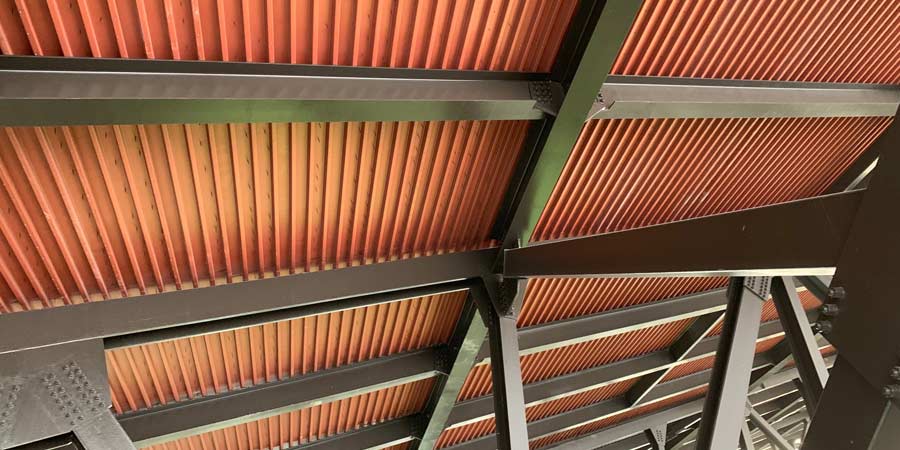
The steel coils used to create Globe Life Field’s clay-colored acoustic deck were painted and perforated prior to roll forming.
For color options, steel deck can match the colors specified by the project’s architect. To get the desired color for the roof deck used on Globe Life Field in Arlington, Texas, for example, New Millennium collaborated with the owners of the Texas Rangers, HKS Architects and fabricator W&W Steel. The result was a clay-colored roof that provides a background that makes baseballs easier to catch during games and matches the team’s colors.
Learn more about our coating and finishing options in our AIA/PDH credit-hour course, System-Based Steel Building Solutions.
Galvanized finish for steel deck is typically available in G30, G60 and G90 coatings. The “G” means the coating is galvanic zinc; the numbers represent the weight of zinc on the surface of the steel in ounces per square foot. The higher the number, the thicker the coating of zinc and the better the deck will hold up to corrosion or rust.
Steel deck used in bridge projects, like Rhino-Dek®, has even higher levels of galvanization to extend service life in corrosive environments. The highest level of galvanization is G235, which could be used to protect bridge deck from road salt used in northern states during the winter or salt water elsewhere. Bridge-Dek with G165 and G210 coating also is available.
How you apply the finish to steel deck varies depending on your needs. The finish can be applied one of three ways, with each having its unique benefits and drawbacks.
After installation, deck can be painted or finished in the field.
Benefits: Least expensive. Easiest if the joists and deck will be coated in the same color.
Drawbacks: Accuracy of field applying topcoats may be difficult. Alternating colors of structural steel may be more labor intensive to paint in the field. Masking or taping off structural members sacrifices time and consistency. An inexperienced painting contractor could inadvertently seal or clog the perforations in acoustical deck.
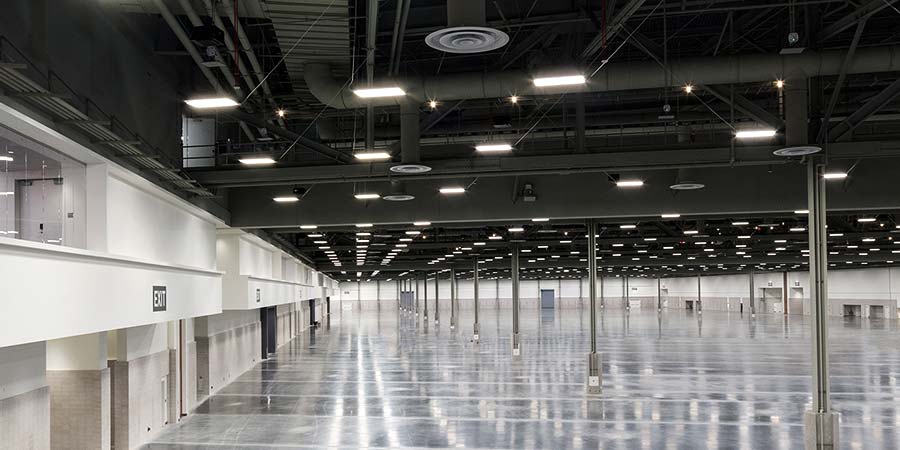
Photo courtesy of Las Vegas Convention and Visitors Authority
Versa-Dek® 2.0 LS ES acoustical roof deck makes up the ceiling of the Las Vegas Convention Center’s gargantuan West Hall. The roof deck was delivered with a gray primer. After installation, crews painted the deck black.
Steel deck can be painted while at the factory using a spray-applied method. During this process, newly rolled metal deck is run through a long, enclosed booth and sprayed or coated with a specified paint finish.
Benefits: Saves time in the field. This process is a thick mil paint that ensures exposed, interior edges of the perforated holes of acoustical deck or sunscreens will be coated, which is critical for natatoriums and other applications exposed to moisture. This prevents the perforated holes from rusting. The factory setting limits on-site exposure to potential volatile organic compounds depending on paint selection.
Drawbacks: Factory pre-finishing may be cost prohibitive. To protect the deck from scratching before and during installation, the contractor and sub-contractor must work closely together. Field touch-ups might be necessary.
The coil for steel deck can be coated before being rolled into a deck profile shape or perforated for acoustics or aesthetics.
Benefits: Deck is pre-painted prior to delivery, saving time in the field. Coil-coating often produces the most durable finish and is more corrosion-resistant than some post-painted metal.
Drawbacks: Coil-coating, like all pre-finished deck, can scratch and should be coordinated with installers. It may be cost-prohibitive. Coil-coating cannot be used with deep profiles or cellular deck; shop-applied welds prohibit this strategy for cellular deck. Perforations in acoustical deck would require a field-applied topcoat if used in a corrosive environment.
Natatoriums and indoor pools create humid, corrosive environments that make the choice of finish particularly important. The steel joist and steel deck finish application methods differ as follows.
Steel joists can be protected two ways in these projects.
Bare steel. The steel fabricator prepares the surface in accordance with the Society for Protective Coatings to ensure proper coating adhesion. This may be SSPC-SP6 Commercial Blast Cleaning or SSPC-SP7 Brush-off Blast Cleaning. A reliable third party may also perform this work.
Joists are primed. Using this method, compatibility of the topcoat with the primer must be verified. The paint manufacturer likely requires surface preparation SSPC standard for adhesion. Joists and deck should receive the same field-applied topcoat.
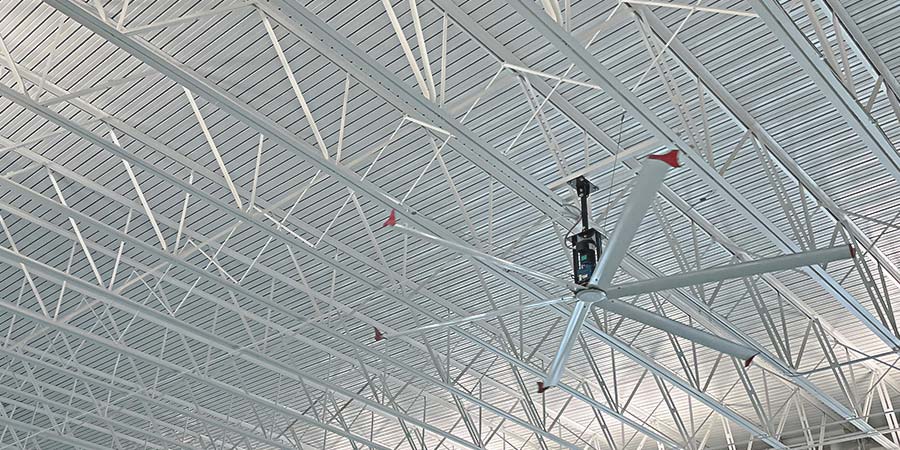
New Millennium supplied Versa-Dek 3.5 LS Acoustical roof deck for the Merriam Community Center pool with a coating that protects the steel from the humid environment.
Steel deck should be specified as G90. Deck surface treatments vary, but the goal is the same: a robust finish to protect the steel.
Powder coating:
In this case, bare galvanized deck may require SSPC-SP1 cleaning before receiving the powder coat. In powder coating, the already fabricated deck is electrically charged, then a dry paint in powder form is statically applied and baked.
Finish topcoat applied in the field:
A typical process goes like this: pre-treating galvanized steel before the deck manufacturer applies an oven-cured epoxy coil coat (primer) prior to shipping. In the field, a third party applies hydrophobic paint such as Tnemec or Sherwin-Williams Macropoxy.
Factory-applied first coat with a field-applied topcoat:
The most recommended option, this option involves G90 deck with an oven-cured epoxy coil coat, along with a polyester coating on the unexposed back side, that then receives a thick mil Tnemec 161 or equivalent. Once installed, a field-applied topcoat ensures maximum performance, such as a Tnemec 1075 or equivalent.
Factory application of all coats:
Delivered to job site ready to install.
What steel joist or steel deck finish is right for you? New Millennium Building Systems specialists help you determine which type and application method is ideal for your next project. Contact us today.
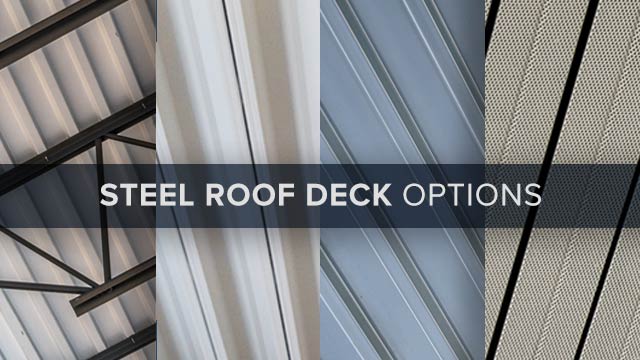
Steel roof deck is not a one-size-fits-all product. Specifying the ideal type for your project is a challenge unto itself. What type is best for your project? It depends.
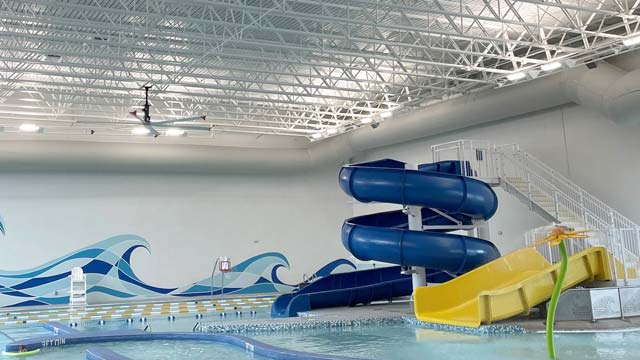
In Merriam, Kansas, an award-winning indoor pool features Versa-Dek® LS Acoustical steel roof deck that resists corrosion and mitigates ambient noise.
Building a better steel experience